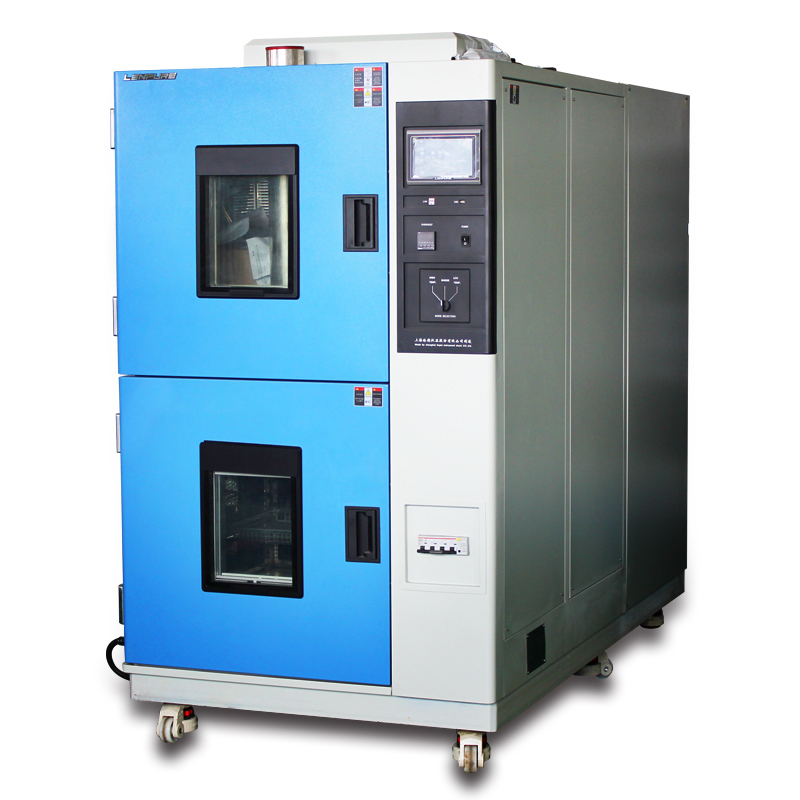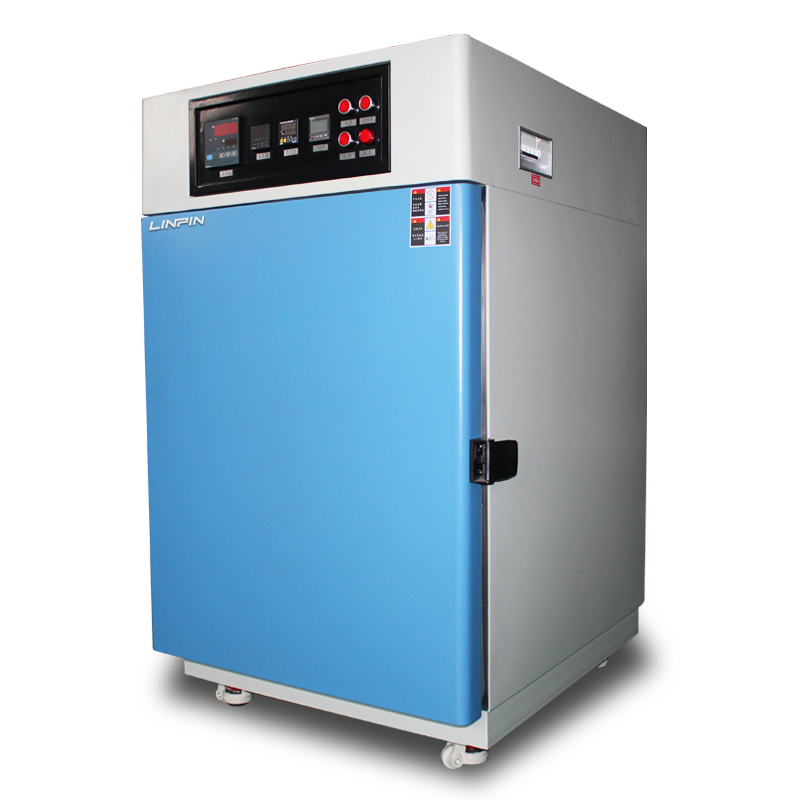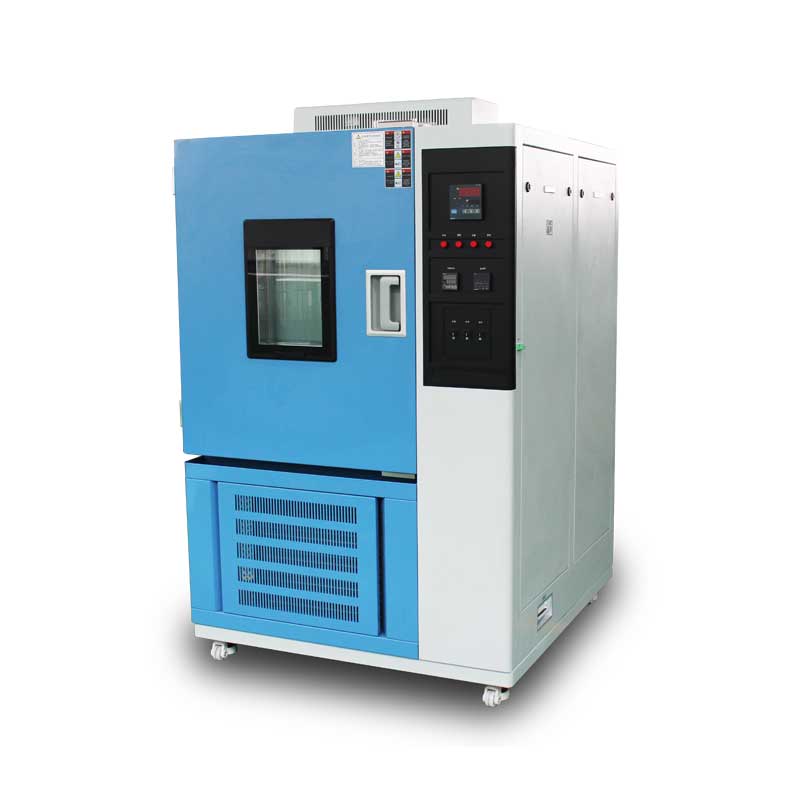Beyond the Threshold: A Comprehensive Guide to Thermal Shock Testing Methods for Uncompromising Product Reliability
Author:LINPIN Update Time:2025-09-28 Source:LINPINIn an era where electronic, aerospace, automotive, and material science products are subjected to increasingly extreme and fluctuating environmental conditions, ensuring long-term reliability is not just an objective—it is a critical business imperative. Thermal shock testing stands as one of the most severe and revealing forms of environmental stress screening, designed to accelerate and uncover latent defects induced by rapid temperature transitions. This white paper provides a comprehensive overview of the predominant thermal shock testing methods, their underlying principles, applicable international standards, and strategic implementation. It serves as an authoritative guide for engineers, quality assurance managers, and product developers seeking to enhance product robustness, mitigate field failure risks, and substantiate their claims of superior quality and durability in the global marketplace.
1. Introduction: The Imperative of Rapid Thermal Stress
All materials expand and contract with temperature changes. When different materials within an assembly—such as silicon chips, solder joints, copper traces, ceramic substrates, and plastic housings—have different Coefficients of Thermal Expansion (CTE), rapid temperature cycling induces mechanical stress. This stress can lead to a multitude of failure modes, including:
- Solder Joint Cracking: A primary cause of failure in electronics.
- Delamination: Separation of layers in PCBs or composite materials.
- Cracking of Components: Failure of ceramic capacitors, resins, and encapsulated elements.
- Changes in Electrical Properties: Intermittent connections or permanent opens/shorts.
Thermal shock testing deliberately induces these failures in a controlled laboratory environment, allowing manufacturers to identify and rectify design or production flaws before products reach the customer. The goal is not to simulate real-world conditions per se, but to employ an accelerated stressor that reveals weaknesses more quickly than gradual temperature cycling.

2. Core Methodologies of Thermal Shock Testing
While the fundamental principle—rapid temperature change—is consistent, the methods to achieve it vary significantly in execution, cost, and application. The three primary methods are:
2.1. Two-Zone (Two-Chamber) Thermal Shock Testing
This is the most common and severe method for achieving the fastest possible transition rates.
- Principle: The test unit is rapidly transferred between two independent chambers: one extremely hot and one extremely cold. The transfer mechanism can be a vertically moving elevator (Basket Type) or a horizontal shuttle system.
- Procedure: The specimen dwells in the first chamber until thermal stability is achieved. It is then mechanically transferred to the second chamber in less than one minute (often 10-15 seconds), where it again dwells until stable. This cycle repeats for a predetermined number of times.
- Standards: MIL-STD-883, Method 1010.9; JEDEC JESD22-A106; EIA-364-32; IEC 60068-2-14.
- Advantages:
- Extremely High Transition Rates: Creates the highest level of stress in the shortest time.
- Clear Separation of Environments: Prevents contamination between hot and cold zones.
- Applications: Military and aerospace components, high-reliability automotive electronics, fundamental material research, and qualification testing for critical components.
2.2. Three-Zone Thermal Shock Testing
This method offers greater control and reduces mechanical stress on the test specimen during transfer.
- Principle: Utilizes three chambers: a hot chamber, a cold chamber, and an ambient-temperature recovery chamber in the center. The test unit cycles between all three, pausing at ambient to stabilize before the next extreme transition.
- Procedure: Hot → Ambient (Dwell) → Cold → Ambient (Dwell) → Repeat.
- Standards: A variant often specified in custom test protocols where the added stress of direct extreme-to-extreme transitions is undesirable.
- Advantages:
- Reduced Mechanical Stress: The ambient recovery zone mitigates the sheer physical shock of transfer.
- Enhanced Condensation Control: Allows moisture to dissipate in the ambient zone, reducing the potential for icing or condensation-related failures that are not the test's focus.
- Applications: Testing larger, more delicate assemblies or devices where the physical jolt of a two-zone transfer could cause damage unrelated to thermal stress (e.g., hard drive testing).
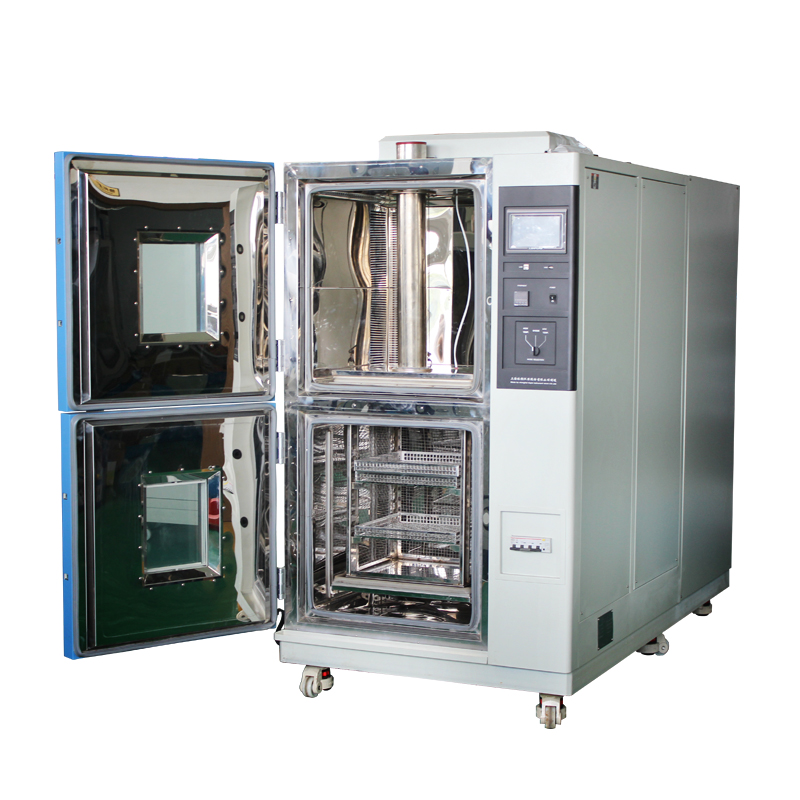
2.3. Liquid-to-Liquid Thermal Shock Testing (Liquid Immersion)
The most aggressive method, utilizing fluids for near-instantaneous heat transfer.
- Principle: The test specimen is mechanically moved between two baths of circulating liquid—typically a high-temperature silicone oil and a low-temperature alcohol (e.g., liquid nitrogen cooled).
- Procedure: The immersion and transfer times are extremely rapid, often achieving transition times of less than 10 seconds.
- Standards: Often used for proprietary or highly specific validation tests, such as GE's Jet Engine specifications.
- Advantages:
- The Highest Possible Heat Transfer Rates: Fluids conduct heat far more efficiently than air, applying the most extreme thermal stress possible.
- Ultra-Fast Cycle Times: Ideal for very high-cycle testing.
- Disadvantages:
- Potential Contamination: Fluids can leave residues or infiltrate imperfectly sealed units.
- Fluid Compatibility: The test unit must be compatible with (or isolated from) the immersion fluids.
- Applications: Testing the integrity of coatings, materials for jet engine blades, and hermetically sealed components where ultimate performance under extreme thermal flux is required.
3. Key Parameters and Considerations for a Valid Test
Simply placing a product in a chamber is insufficient. A reliable test requires meticulous definition of parameters:
- Temperature Extremes: The high and low set points must be chosen based on the product's operational and storage specifications, with an added margin of safety.
- Dwell Time: The duration at each extreme temperature must be long enough for the entire test specimen to reach thermal saturation. Undersizing this is a common error that invalidates results.
- Transition Time: The maximum allowable time to move between chambers. Standards often specify this as "less than one minute." Faster is generally more severe.
- Number of Cycles: The test continues until a predetermined number of cycles is completed or until a failure is observed. The number should be statistically significant to demonstrate reliability.
- Monitoring: In-situ monitoring of the test specimen (e.g., power applied, functional testing during dwells) is crucial for detecting intermittent failures that may not be visible post-test.
4. Demonstrating Value and Technical Prowess
For a company, investing in a state-of-the-art thermal shock testing facility is a powerful statement of commitment to quality. It demonstrates:
- Proactive Failure Analysis: The ability to find and fix problems on your own terms, not your customers'.
- Competitive Advantage: Products certified to withstand 500 cycles per MIL-STD-883 command a premium over those with untested or unverified reliability.
- Reduced Warranty Costs and Brand Protection: Preventing field failures saves millions in recall costs and protects brand reputation.
- Faster Time-to-Market: Accelerated life testing provides confidence to launch products faster, knowing they have been rigorously validated.
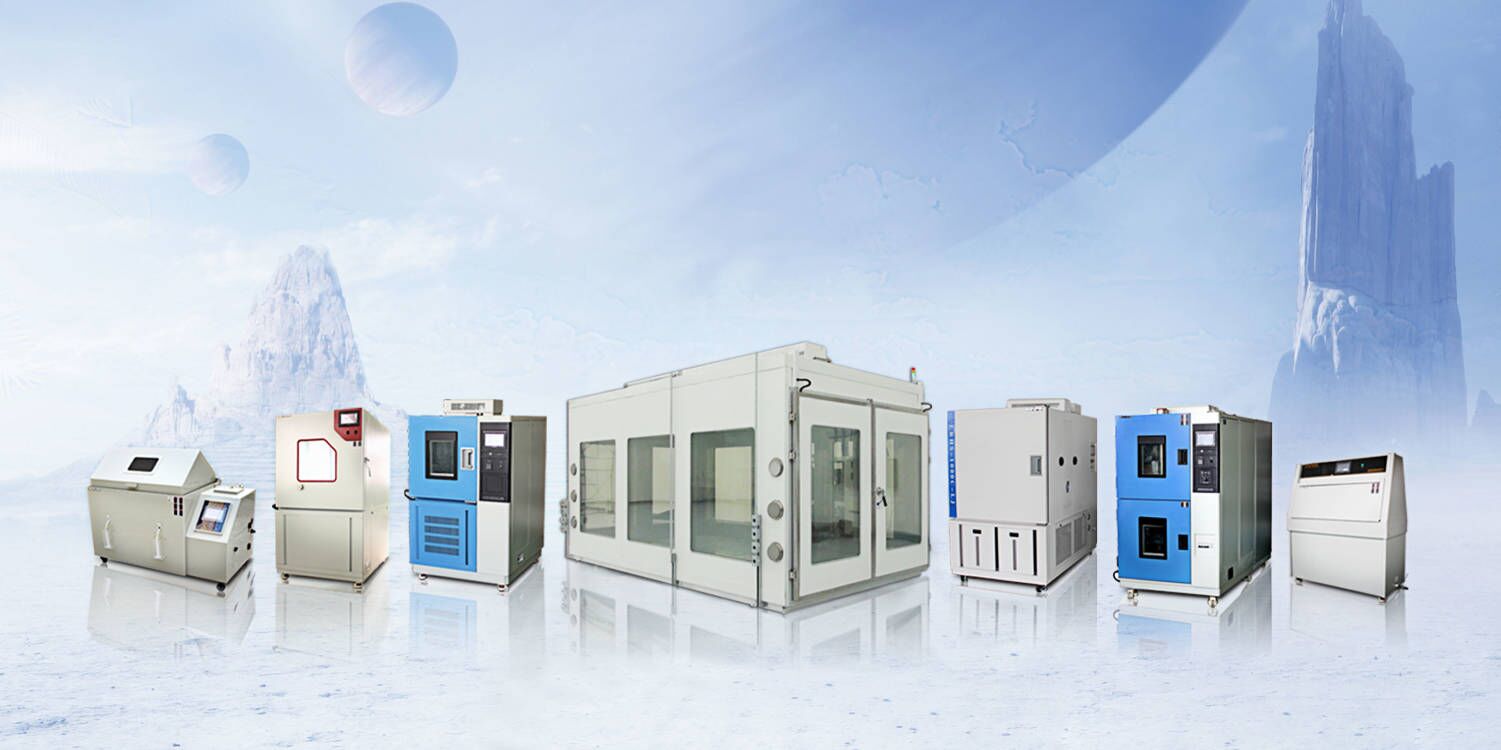
5. Conclusion: The Cornerstone of Reliability Assurance
Thermal shock testing is not merely a box to check on a compliance sheet; it is a fundamental engineering tool that separates robust, well-engineered products from those that will likely fail in the field. The choice between two-zone, three-zone, and liquid-to-liquid methods depends entirely on the specific failure mechanisms one aims to uncover and the product's intended application.
By understanding and rigorously applying these methods in accordance with international standards, manufacturers can build an undeniable narrative of quality, durability, and technical excellence. This commitment, proven through data and validated performance, is the ultimate currency in building trust with partners and customers in the most demanding industries worldwide. It is the definitive proof that a product is built not just to function, but to endure.

